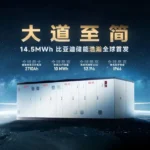Revolutionizing the Energy Industry: A Comprehensive Overview
The energy industry is undergoing a significant transformation, driven by technological advancements and shifting consumer demands. As the world transitions towards a more sustainable and renewable energy mix, companies are investing heavily in innovative solutions to reduce their carbon footprint. With the global energy demand projected to increase by 30% by 2040, the industry is poised for significant growth and development.
Energy Mix: A Shift Towards Renewables
The energy mix is undergoing a significant transformation, with renewable energy sources such as solar and wind power becoming increasingly prominent. In 2020, renewables accounted for 26% of global electricity generation, up from 21% in 2015. This shift is driven by declining technology costs, government policies, and growing consumer demand for clean energy. For instance, the cost of solar energy has fallen by over 70% in the last decade, making it more competitive with fossil fuels.
Solar Energy: Leading the Charge
Solar energy is leading the charge in the renewable energy sector, with global installations reaching 720 GW in 2020. The technology has improved significantly, with solar panels now producing up to 350 watts of power per panel, up from 250 watts in 2015. Countries such as China, the US, and India are driving the growth of the solar industry, with investments in solar energy expected to reach $1.3 trillion by 2025.
Energy Storage: The Key to Unlocking Renewables
Energy storage is critical to unlocking the full potential of renewable energy sources. As the grid becomes increasingly dependent on intermittent sources of energy, such as solar and wind, energy storage systems are necessary to ensure a stable and reliable supply of electricity. The global energy storage market is projected to reach $620 billion by 2040, with lithium-ion batteries being the dominant technology. However, other technologies such as flow batteries and hydrogen fuel cells are also gaining traction.
Grid Modernization: The Future of Energy Distribution
Grid modernization is essential to support the integration of renewable energy sources and energy storage systems. The traditional grid was designed to support a one-way flow of energy, from the power plant to the consumer. However, with the rise of distributed energy resources, such as rooftop solar and energy storage systems, the grid needs to be able to support a two-way flow of energy. This requires significant investments in grid infrastructure, including smart grids, advanced metering systems, and grid management software. The global grid modernization market is projected to reach $1.5 trillion by 2025.
Conclusion: A Sustainable Energy Future
The energy industry is undergoing a significant transformation, driven by technological advancements and shifting consumer demands. As the world transitions towards a more sustainable and renewable energy mix, companies are investing heavily in innovative solutions to reduce their carbon footprint. With the global energy demand projected to increase by 30% by 2040, the industry is poised for significant growth and development. As the industry continues to evolve, it is essential to prioritize grid modernization, energy storage, and renewable energy sources to create a sustainable energy future.


_2.png?w=150&resize=150,150&ssl=1)
.png?w=150&resize=150,150&ssl=1)


.png?w=150&resize=150,150&ssl=1)
